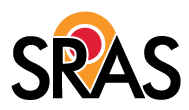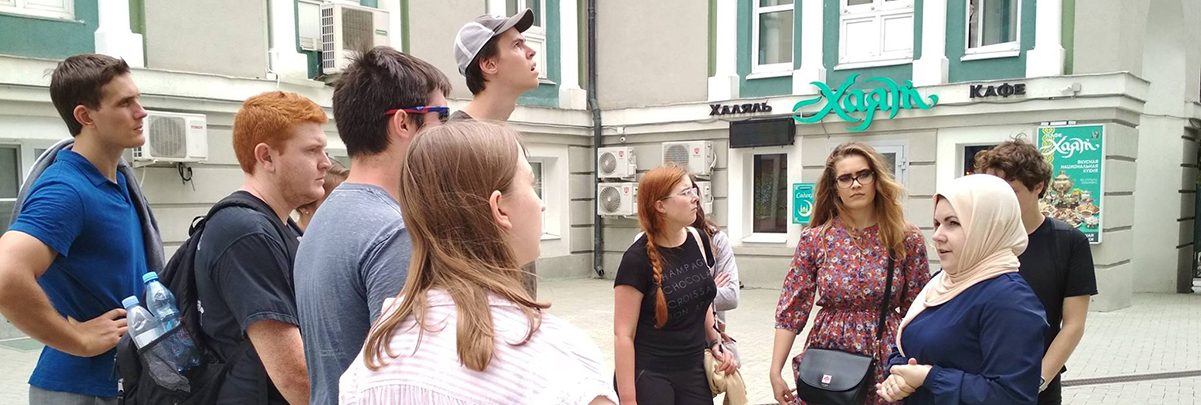Survey of Pre-College Enrollments in Russian Language Classes, 2021
Background
This survey was first conducted by CCPCR, The Committee on College and Pre-College Russian. The committee was created in 1984 as a result of the Report of the National Committee for Russian Language Study (1983), which itself followed a report of the Carter administration’s Presidential Commission on Foreign Language and International Studies (1979). Noting (in 1983) that “enrollments in the Russian language have dropped more precipitously than those in any other major modern language,” the Committee for Russian Language Study, composed of representatives of AAASS, AATSEEL, and ACTR, made 12 recommendations in the Report, among which was an initiative to strengthen pre-college Russian programs and establish a survey of pre-college Russian teaching.
In 2002, CCPCR added an annual fall survey of college/university-level Russian enrollments at the 1st and 2nd year levels. This survey was coordinated from 2002-2018 by John Schillinger, now Emeritus Professor of Russian from American University in Washington, D.C. In 2018, Professor Schillinger retired from heading the survey and SRAS, an organization specialized in study abroad to Eurasia and promoting and supporting the study of Eurasia in North America, took over. Find out more about SRAS and our varied projects.
Since 2018 SRAS has, in conference with several Russian professors, sought to make the survey even richer and more informative. The survey was moved to a larger, electronic questionnaire and all previous information was loaded into a single database to allow for extended analysis and the creation of graphics. Additional questions are added based on interests professors expressed in focus groups conducted by SRAS.
Survey data gathered by CCPCR from 1996-2013, unfortunately, was corrupted due to errors made in a previous server migration. SRAS has been unable to effectively use it here. Thus, our reporting begins with 2018.
Our survey was distributed via the listserv SEELANGS, the SRAS newsletter, and mailings coordinated with the American Council on Teaching Foreign Languages (ACTFL) to their members. The ACTFL has been an invaluable help to this survey effort.
If you are interested in supporting Russian language study at the pre-college or college level or wish to connect with SRAS, either to add information about your program, ask questions, or make recommendations for our projects, please contact us.
Overall Enrollment and Grade Breakdown
This survey does not represent a complete census of the pre-college field. The mailing list for the ACTFL identifies approximately 100 different institutions. A larger survey, conducted in 2017 by the American Councils for International Education in conjunction with numerous professional organizations and support from the US government, identified 147 individual high school programs at that time.
For 2021, SRAS received responses from 44 institutions. This represents a 26% drop in reporting institutions from 2020, when 58 responses were received. We saw a similar drop in our college survey, as it seems that educators may be busier with pandemic-era educational needs and may have had less time this year to respond to this all-volunteer survey.
Public schools have also reported lower overall enrollment since 2019, with a nation-wide drop of between 2-3%. This is in part due to pandemic-related difficulties in education, but also a result of falling birthrates in the US, which have been steadily declining since 2007. Fewer children are enrolling in public education in the US in part because there are simply fewer children to enroll.
Despite all these drops – with a 26% drop in reporting and a 2-3% drop overall in public school enrollment, the total reported number of students studying Russian dropped by only 7.8%, showing a remarkable resilience.
Further, the number of middle schoolers reported has consistently grown, with 2021 numbers representing a 29.6% gain over those for 2018. Grade school numbers have remained remarkably stable, with 2021 representing a .65% gain over 2018. All of the losses came from high school reportings, historically the largest reported program set, which fell by 14.1%.
Most (24) reporting programs in 2021 reported having a high school program. Fewer (9) reported middle school programs and fewer still (5) reported grade school programs.
Of the five reporting grade school programs, just two account for about 87% of the enrolments. Thus, like last year, we can say that grade school programs tend to be hosted in specialized schools in which language immersion is given high priority.
Middle school and high school programs also have a range of program sizes, but none are quite so concentrated as the grade school numbers.
Program Sizes
There is great diversity in the sizes of programs reporting, with the smallest program at just nine students and the largest at 1000.
Reported program sizes shifted significantly in 2021, with a clear polarization favoring small programs of less than thirty and larger programs of more than a 100 at the expense of mid-range programs, which remain the largest reported segment.
Program Growth
To track trends in enrollment, we can calculate year-on-year growth for any program reporting for two consecutive years. For 2020-2021, a majority of such programs have reported negative growth, as happened in 2018 and 2019.
On average, individual programs shrunk by about 2% from 2020 to 2021, a decrease on par with the national average for losses in public school enrollment.
Smaller programs have experienced the most volatility while larger programs have been much more stable.
It should be noted that growth for programs over 100 was driven in 2019 and 2021 by two outliers that reported growth of about 160% each year-on-year. In 2019, Perspektiva, a private, online program was growing rapidly in part with pandemic-driven interest in online education. In 2020, Silverado High School in Las Vegas opened a new program while still under local pandemic restrictions. In 2021, they experienced rapid program growth within their large school district as those restrictions were lifted.
Without these two outliers, average program growth for this segment would have been -2.15% in 2019 and -0.66% in 2021.
State-by-State Breakdown
About half (21) of all US states are represented in this survey.
However, the survey is dominated by a few. Most of these states have individual large programs. It is also interesting to point out that most of these states have significant populations of Russian speakers.
New York accounts for a quarter of reported enrollments. Roughly another half are distributed among five states: Illinois, Virginia, Arizona, New Jersey, and Maryland.
Heritage Speakers
Although states with Russian speaking populations are generally over-represented here, and while these programs likely allow native Russian-speaking individuals to learn more of their heritage and language, most programs report that most of their students are, in fact, not heritage speakers. Instead, they serve a wider public.
The surrounding Russian-speaking population is thus not the main source of students, although it likely makes finding teachers easier and perhaps makes the programs more immediately and visibly practical by increasing the language’s use among parents and local businesses.
Requirements and Levels
The majority of programs at the pre-college level are hosted in schools with a language requirement. Approximately the same percentage of programs reported having these requirements as last year.
Most programs also offer advanced instruction. This year, however, fewer programs reported offering the most advanced instruction levels, although it seems that programs with higher levels were simply less likely to report this year.
Types of Instruction
The range of program instruction is beginning to change as COVID-related restrictions shift. In 2020 and 2021, nearly all programs still offered face-to-face learning. In 2020, however, they were also quite likely to offer hybrid or online alternatives. In 2021, these alternatives are apparently being sidelined in favor of face-to-face.
Respondents could select multiple options to reflect all styles used across their programs. Thus, the total below is larger than the overall number of programs reporting.
Partnerships
Partnerships were always relatively rare and have remained generally unchanged.
University partnerships and those with other schools have been the most common. This year, with fewer reporting programs overall, the percentage of these partnerships reported actually grew from about 16 to 18 percent for university partnerships and from about 9 to 12 percent for partnerships with other schools. Third party providers fell from just 3 to 1 and other partnerships reported from 2 to 1.
Other Languages Offered
In only four programs is Russian the only foreign language offered. In all other programs, it is most commonly offered with three other foreign languages. However, numbers of foreign languages offered ranged from one up to 10, with an average of about four taught per program. Below are the languages that were reported as offered by two or more programs.
Faculty
Faculty proportions have changed over the past year. Last year, programs reported an average of 0.9 part time instructors and 1.4 full time instructors per program. This year, those numbers changed to .8 and 1.1, respectively. Most commonly, programs are staffed by a single full time or a single full time and single part time teacher although larger programs report as many as 11 full time teachers or as many 23 part time in a single program.
Data Set
Anyone interested in seeing individual program numbers, program growth calculations, and/or raw data for majors and minors, can do so by accessing this Googlesheet. The original questionnaire is archived here.
Surveys for additional years can be found here.
"We had a great time overall. The students were super impressed with SRAS -- the guides, the accommodations, the excursions, etc. The guides were super knowledgeable and kind--the only thing that would improve the tours is volume. They tend to speak quietly so a few people who can't hear lose interest. But we loved the Hermitage art project and Novgorod, and the bunker, and going behind the fountains at Peterhof, and the boat to Peterhof... We loved everything!"
- Ona Renner-Fahey, University of Montana
"Thanks again to (SRAS Assistant Director) Josh Wilson for being so helpful with getting us started! At our concluding discussion class yesterday I asked the students to write and then present five "Kliuchevykh slov" about their experience. Several of them wound up referencing Josh's comments about trying to observe without judging, which he made during the Moscow Walking Tour. Thanks for helping me teach this course!"
- Jane Costlow, Bates College
"A long overdue thank you for the wonderful trip you and your staff planned for the Drew group in St. Petersburg. I have never had a trip where NOTHING went wrong. It was a terrific experience from start to finish, your staff was superb and St. Petersburg Economics University was a marvelous host. We enjoyed each and every lecture and guide, and the many fine added touches. I would love to do this again."
- Dr. Carol R. Ueland, Drew University
"The SRAS guides were excellent! They really knew their stuff and were able to relate the history of the places we visited in an interesting and inventive way. It was obvious they had a lot of experience working with American students."
- Charles Arndt III, Union College
"My Dear Renee, I am still in Kazakhstan but can report back we had a perfectly splendid time in Kyrgyzstan. The students and I want to collectively buy a little plot of land and a yurt or house in the village at the base of the mountains. They loved their families and I fell in love with Kenzhe, we want to include her in our documentary. I will be in touch over the next two weeks. Forever grateful to you."
- Jane Knox-Voina, Bowdoin College

